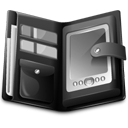 |
 |
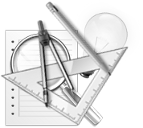 |
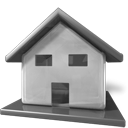 |
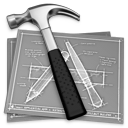 |
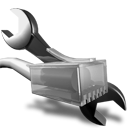 |
 |
 |
|
|
|
|
|
|
|
|
|
|
|
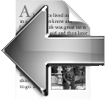 |
FIFA Soccer Laws of the Game |
|
|
|
So who or what is FIFA?
FIFA is he International Federation of Association
Football (French: Fédération Internationale de Football Association).
It's usual English pronunciation is: /ˈfiːfə/). It is the international
governing body of association football. Its headquarters are located in
Zürich, Switzerland, and its current president is Sepp Blatter.
FIFA is responsible for the organization and governance of football's
major international tournaments. FIFA has 208 member associations.
The soccer world cup in South Africa is organized and governed by
FIFA.
So who or what is Soccer?
Soccer (football) is a team sport played between two
teams of eleven players using a round or spherical ball. It is
considered the most popular sport in the world.
The two teams compete to get the ball into the other team's goal
(between the posts and under the bar). The team that manages to put the
ball between he oponents goal scores a goal. The team that has scored
the most goals by the end of the match (Game) is the winner.
Players other than the goalkeeper are not allowed to deliberately touch
the ball with their hands or arms except during throw-in restart which takes
place when the ball has left the field on the two longer
boundary lines which are called touch lines. Besides the hands,
all other parts of the body are allowed to handle the ball.
Soccer is considered a contact sport. In "contact"
sports (eg, basketball and soccer), athletes routinely make contact with
each other or inanimate objects (The soccer ball) but usually with less
force than in collision sports (Rugby).
FIFA soccer rules
On 1 July 2009, the
new Laws of the Game, modified at the 123rd Annual General Meeting of
the International Football Association Board (IFAB) in Newcastle,
Northern Ireland on 28 February 2009, came into force
FIFA rules are as follows:
Field surface
Matches may be played on natural or artificial
surfaces, according to the rules of the competition.
The colour of artificial surfaces must be green.
Where artificial surfaces are used in either competition matches between
representative teams of member associations affiliated to FIFA or
international club competition matches, the surface must meet the
requirements of the FIFA Quality Concept for Football Turf or the
International Artificial Turf Standard, unless special dispensation is
given by FIFA.
Field markings
The field of play must be rectangular and marked
with lines. These lines belong to the areas of which they are
boundaries.
The two longer boundary lines are called touch lines. The two shorter
lines are called goal lines.
The field of play is divided into two halves by a halfway line, which
joins the midpoints of the two touch lines.
The centre mark is indicated at the midpoint of the halfway line. A
circle with a radius of 9.15 m (10 yds) is marked around it.
Marks may be made off the fi eld of play, 9.15 m (10 yds) from the
corner arc and at right angles to the goal lines and the touch lines, to
ensure that defending players retreat this distance when a corner kick
is being taken.
Dimensions
The length of the touch line must be greater than
the length of the goal line.
| Length (touch line): | minimum | 90 m | (100 yds) |
| maximum | 120 m | (130 yds) | |
| Width (goal line): | minimum | 45 m | (50 yds) |
| maximum | 90 m | (100 yds) |
All lines must be of the same width, which must be not more than 12 cm (5 ins).
International matches
Two lines are drawn at right angles to the goal line, 5.5 m (6 yds) from the inside of each goalpost. These lines extend into the fi eld of play for a distance of 5.5 m (6 yds) and are joined by a line drawn parallel with the goal line. The area bounded by these lines and the goal line is the goal area.
The penalty area
Two lines are drawn at right
angles to the goal line, 16.5 m (18 yds) from the inside of each
goalpost. These lines extend into the fi eld of play for a distance of
16.5 m (18 yds) and are joined by a line drawn parallel with the goal
line.
The area bounded by these lines and the goal line is the penalty area.
Within each penalty area, a penalty mark is made 11 m (12 yds) from the
midpoint between the goalposts and equidistant to them.
An arc of a circle with a radius of 9.15 m (10 yds) from the centre of
each penalty mark is drawn outside the penalty area.
Flagposts
A flagpost, not less than 1.5 m (5 ft) high, with a
non-pointed top and a flag must be placed at each corner.
Flagposts may also be placed at each end of the halfway line, not less
than 1 m (1 yd) outside the touch line.
The corner arc
A quarter circle with a radius of 1 m (1 yd) from each corner fl agpost is drawn inside the field of play.
Goals
A goal must be placed on the centre of each goal
line.
A goal consists of two upright posts equidistant from the corner
flagposts and joined at the top by a horizontal crossbar. The goalposts
and crossbar must be made of wood, metal or other approved material.
They must be square, rectangular, round or elliptical in shape and must
not be dangerous to players. The distance between the posts is 7.32 m (8
yds) and the distance from the lower edge of the crossbar to the ground
is 2.44 m (8 ft).
Both goalposts and the crossbar have the same width and depth, which do
not exceed 12 cm (5 ins). The goal lines must be of the same width as
the goalposts and the crossbar. Nets may be attached to the goals and
the ground behind the goal, provided that they are properly supported
and do not interfere with the goalkeeper.
The goalposts and crossbars must be white.
Safety
Goals must be anchored securely to the ground. Portable goals may only be used if they satisfy this requirement.
The field of play
Corner flagpost
Metric measurements
Imperial measurements
Qualities and measurements
The ball is:
• Spherical (Round)
• Made of leather or other suitable material
• Of a circumference of not more than 70 cm (28 ins) and not less than
68 cm (27 ins)
• Not more than 450 g (16 oz) and not less than 410 g (14 oz) in weight
at the start of the match
• Of a pressure equal to 0.6 – 1.1 atmosphere (600 – 1,100 g/cm2) at sea
level (8.5 lbs/sq in – 15.6 lbs/sq in)
Replacement of a defective ball
If the ball bursts or becomes defective during the course of a match:
• the match is stopped
• the match is restarted by dropping the replacement ball at the place
where the original ball became defective, unless play was stopped inside
the goal area, in which case the referee drops the replacement ball on
the goal area line parallel to the goal line at the point nearest to
where the original ball was located when play was stopped.
If the ball bursts or becomes defective whilst not in play at a kick-off, goal kick, corner kick, free kick, penalty kick or throw-in:
• the match is restarted accordingly
The ball may not be changed during the match without the authority of the referee.
Decisions of the International F.A. Board
Decision 1
In addition to the requirements of Law 2, acceptance of a ball for use in matches played in an offi cial competition organised under the auspices of FIFA or the confederations is conditional upon the ball bearing one of the following:
• the official “FIFA APPROVED” logo
• the official “FIFA INSPECTED” logo
• the “INTERNATIONAL MATCHBALL STANDARD” logo